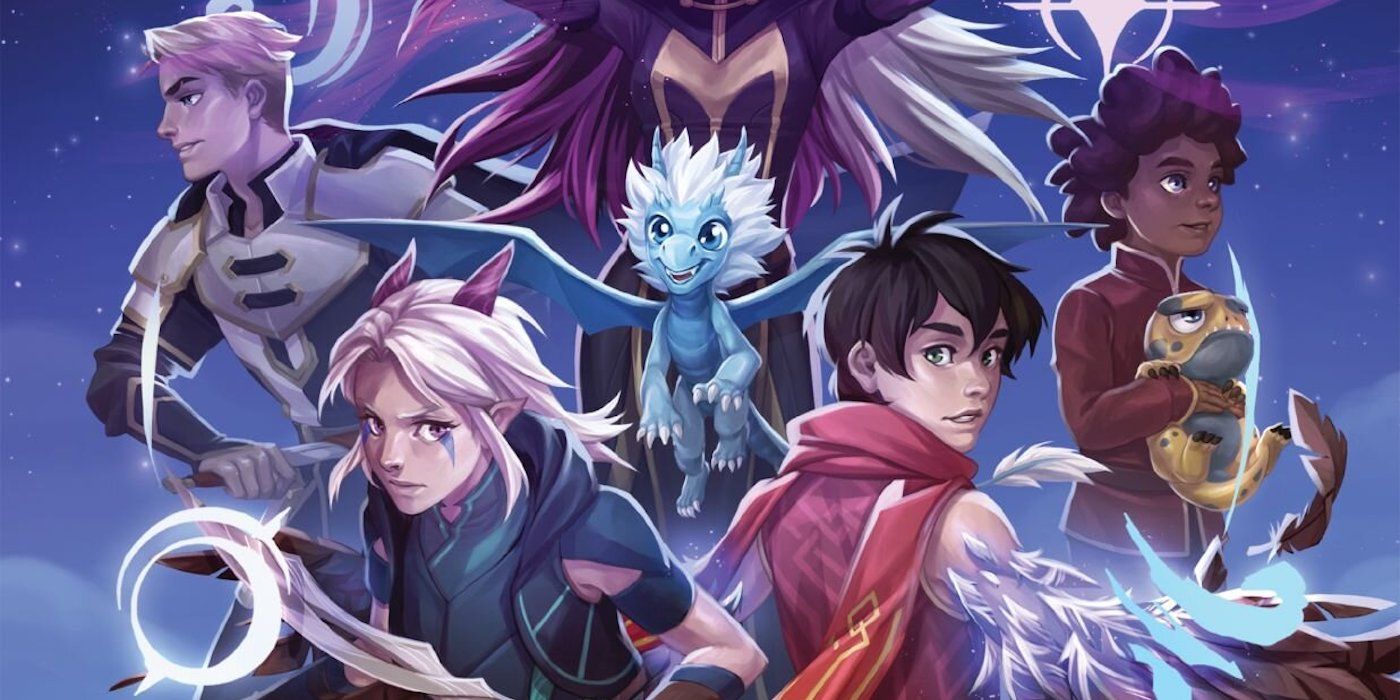Tales of Xadia is a new tabletop roleplaying game developed by Fandom Tabletop, and it's based off of Wonderstorm's animated series, The Dragon Prince. More and more shows are getting the tabletop treatment these days, from Rick and Morty to Stranger Things. Both of those series chose to work with publishing giant Wizard of the Coast to create Dungeons & Dragons sourcebooks, but Wonderstorm has set out on a different route by working with Fandom Tabletop. The game uses Fandom's Cortex system, but its implementation of the game's core ideas are baffling to say the least.
Most tabletop games have players roll a die and add a modifier to determine the result. Some up the complexity a little by instead having players form a "dice pool" as they tally up different stats. Cortex takes the dice pool approach, but complicates matters even further by having stats vary in die size. A weak trait is represented by a four-sided die, where a very strong one uses a twelve-sided die. A character makes most rolls by choosing a die from their base set of stats (Strength, Spirit, Influence, Intellect, Awareness and Agility).
That's not so different from Dungeons & Dragons, but players then also choose a die from a secondary set of stats (Devotion, Glory, Justice, Liberty, Mastery and Truth). The issue with more esoteric statistics is how they make it harder to determine what to roll. Is striking a foe based off a desire for Justice? Or a Mastery of the art of combat? The subjective nature of such rolls is likely to lead to players simply choosing whatever they're best at and arguing for it instead of going off of what makes the most sense.
If picking the first two dice to roll wasn't enough, players then pick one of their "distinctions" to roll with. Distinctions are based off of defining traits for the character, and the basic rules primer doesn't make clear how players pick them to begin with. Once they have their three dice, players roll them and try to beat a number the Game Master sets by rolling two dice of their own. This is yet another issue for the game, as constant rolling in that way is likely to slow down the game. It also makes gameplay inconsistent, as an easy task can be made suddenly difficult by a high roll of the Game Master's dice.
When players roll their three dice, they only use two out of their set to beat the difficulty. The third die stays and becomes what's called an "effect" die, determining results like damage or whether a greater challenge gets easier. This isn't a terrible idea, but is further complicated by assets and specialties, both of which provide players extra dice to roll.
The issue here is that every time a player has to roll, they have to ask themselves four questions. What primary stat do I use? What secondary stat? What distinction? Do any of my assets or specialties help here? Then, once they make it through that gauntlet and roll, they have to figure out which of their dice they want to use to beat the difficulty and which they want to keep as effect dice. That amount of complexity on every single roll is likely to slow the game down to a crawl.
There's also the problem of how the game handles damage. Whenever characters take damage, the size of the effect die their attacker rolled is inflicted on them as stress, which comes in six different types. A character can be Afraid, Angry, Anxious, Corrupted, Exhausted or Injured. Each of these are tracked separately, and are upgraded whenever the same kind comes up repeatedly.
Stress isn't simply a marker of damage though, it's also an active hindrance for the players. Whenever they make a roll and have stress, the difficulty is upped by one of their kinds of stress -- however large the related die is. This is a cool idea, since it makes sense that players wouldn't be just as effective at one hit point as they are at a hundred. However, six different types seems excessive, and it can easily lead to situations where players lose track of how healthy their character is.
All of this complexity is not a bad thing in and of itself. There's plenty of room in the world for more complex games, especially since there are tons of roleplaying games already catering to those looking for a rules-lite experience. The issue lies in the nature of a licensed game like Tales of Xadia. When drumming up a group to play, it'd be best to find those who've seen the show, since they're going to appreciate the setting and features of the game.
However, if any of those players haven't already played a tabletop RPG, starting with something like the Cortex system is akin to starting swimming by being thrown into the deep end. It's possible they'll have a great time, but it's equally likely the rules of the game stop them from "clicking" with the experience. When building out a licensed game, the goal should be to have the rules make players feel like they're in their favorite universe. Tales of Xadia's rules primer and first adventure seem more likely to lead to headaches and abandoned campaigns.



